Mechanical Engineering Training Package, Intermediates, Part 2, 10 Exercises
$179.00 $89.50 Student Discount
There are 10 practical exercises in this training package by ANSYS Fluent software for Mechanical Engineers. This package presents how to simulate different mechanical devices for all INTERMEDIATE users.
Click on Add To Cart and obtain the Geometry file, Mesh file, and a Comprehensive ANSYS Fluent Training Video.To Order Your Project or benefit from a CFD consultation, contact our experts via email (info@mr-cfd.com), online support tab, or WhatsApp at +44 7443 197273.
There are some Free Products to check our service quality.
If you want the training video in another language instead of English, ask it via info@mr-cfd.com after you buy the product.
Description
Mechanical Engineering – ANSYS Fluent Training Package, 10 Practical Exercises for INTERMEDIATE Users (Part 2)
There are 10 practical exercises in this training package by ANSYS Fluent software for Mechanical Engineers. This package presents how to simulate different mechanical devices for all INTERMEDIATE users.
In analysis number 1, the process of separating the liquid phase from the gas is using a horizontal cylindrical separator is investigated. The realizable k-epsilon model is used for solving turbulent flow equations. Also, a multi-phase VOF model is activated to simulate two phases of oil and hydrogen sulfide inside the separator. Problem number 2 simulates the collision of air and water flow within a separator chamber. In this modeling, a cylindrical separator chamber is designed whose interior space is full of water. Water then enters through a vertical pipe from the top of the chamber and exits through a bottom pipe located at the bottom of the chamber; While airflow enters from a horizontal tube on the lateral surface of the chamber and exits through a horizontal tube on the lateral surface of the upper part.
In project number 3, the moving of a sea robot is simulated. The water enters the inlet boundary with a velocity of 1.5m/s while the robot moves towards this boundary with a velocity of 3m/s. The dynamic mesh model is activated and smoothing and remeshing options are enabled.
In practical exercise number 4, the water flow passing over the Kaplan turbine is investigated. The Kaplan turbine rotates at 3300 rpm and sucks the water in. RNG k-epsilon model is exploited to solve turbulent flow equations. It should be noted that the MRF (Frame Motion) option has been activated to model the rotation of the turbine. In project number 5, we are going to study the hydrodynamics of a Kaplan turbine. The geometry included a small size Kaplan turbine with 125 [mm] as a new prototype. Our static domain consists of 8 [m] long rectangle, and our rotary domain is the Kaplan geometry with 16.5 RPM as the angular velocity.
In project number 6, steady airflow mixing with fuel is investigated in a 3-outlet manifold where only one outlet is effective and the other 2 outlets are blocked. There are two inlets that provide air and fuel flow into the domain. Air and fuel flow rates are equal to 0.2335 and 0.0374 kg/s. Species entering the domain via air inlet are nitrogen and oxygen with mass fractions equal to 0.79 and 0.21, respectively.
Problem number 7 simulates fluid mixing in a bioreactor with a Rushton turbine. The bioreactor modeled in this simulation has a cylindrical structure. A stirrer is placed vertically inside it to rotate the fluid flow inside this model to help the fluid mix and thus the desired chemical process.
In project number 8, the analysis of thrust and lift forces behind the mechanical propeller on the fuselage is examined. A propeller consists of two or more twisted blades. The rotating computational domain must rotate around the impeller axis to model the impeller rotational motion using the Mesh Motion method.
In study number 9, using the DPM (Discrete phase material) method, the effect of impurities in a gas splitter was investigated. The impurity gas entered at a speed of 5 meters per second vertically and was directed out through 3 outlets. The impurity distribution, concentration, adsorption, and reflection in the installed filters are investigated.
Finally, In project number 10, a numerical effort has been used to simulate the agricultural drone sprayer. The system consists of two different fluids, including air as the primary fluid, and one secondary fluid is poison with a density of 0.9512. The Eulerian multiphase model has been used.
Reviews
Related products
-
HAWT (Horizontal Axis Wind Turbine) ANSYS Fluent CFD Simulation Training
Rated 4.00 out of 5$140.00$70.00 Student Discount
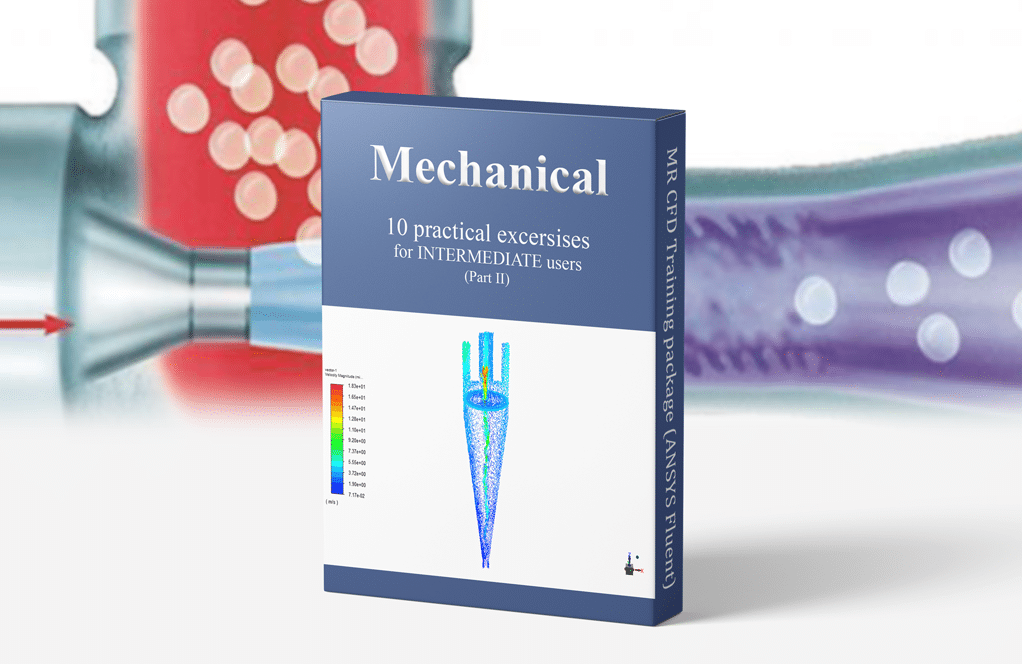
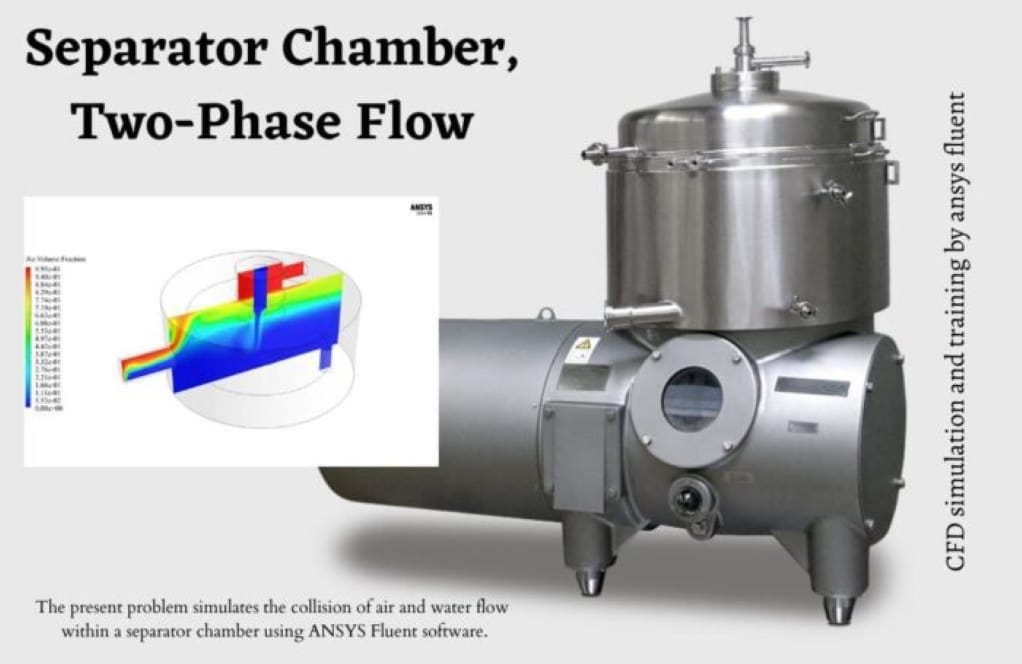

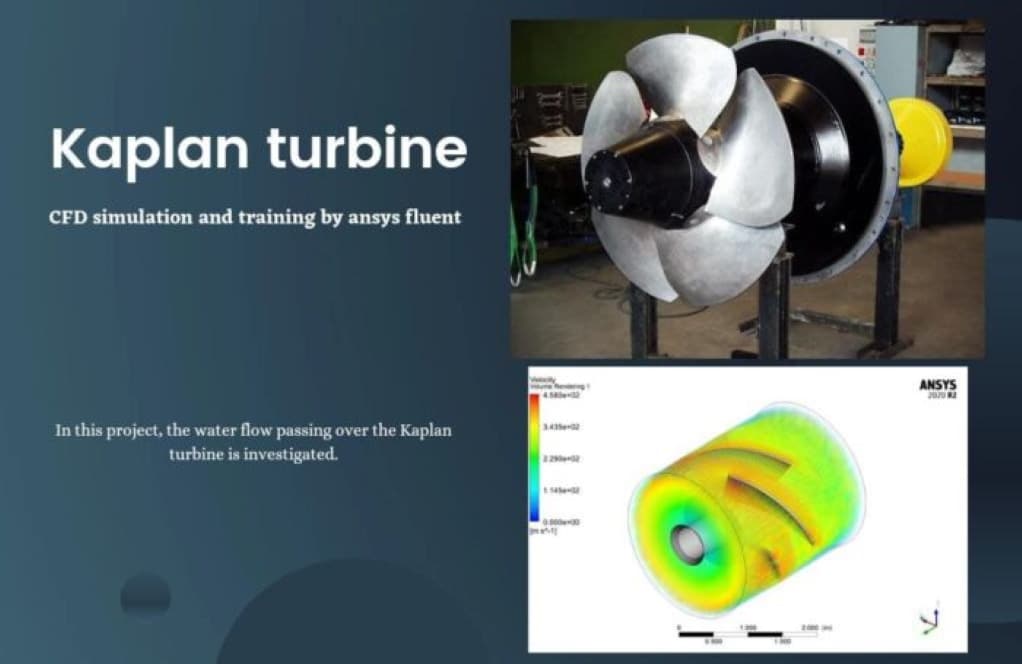
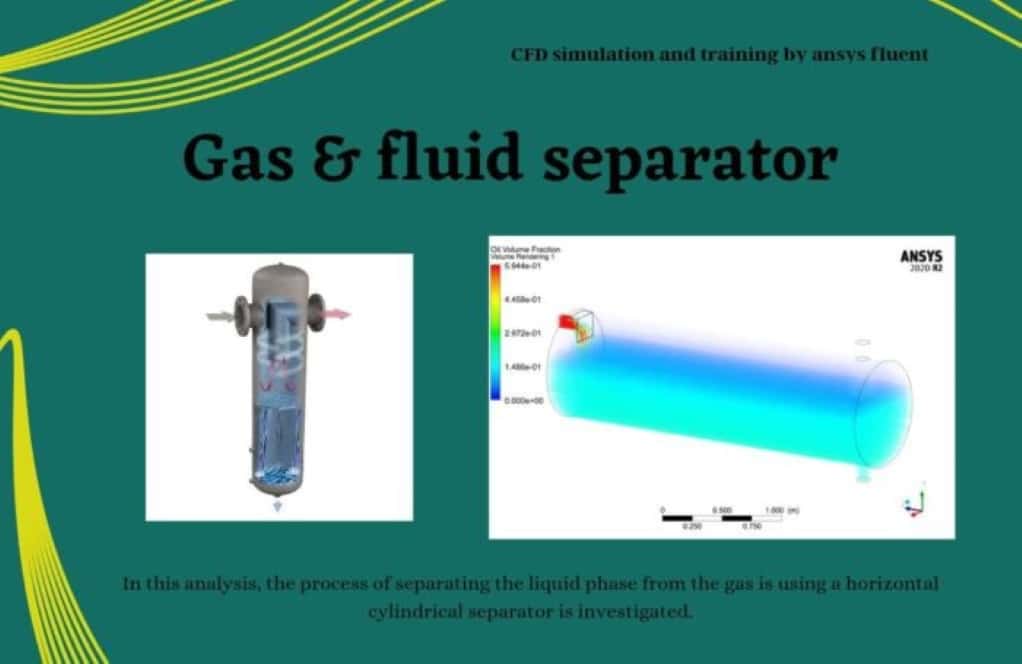
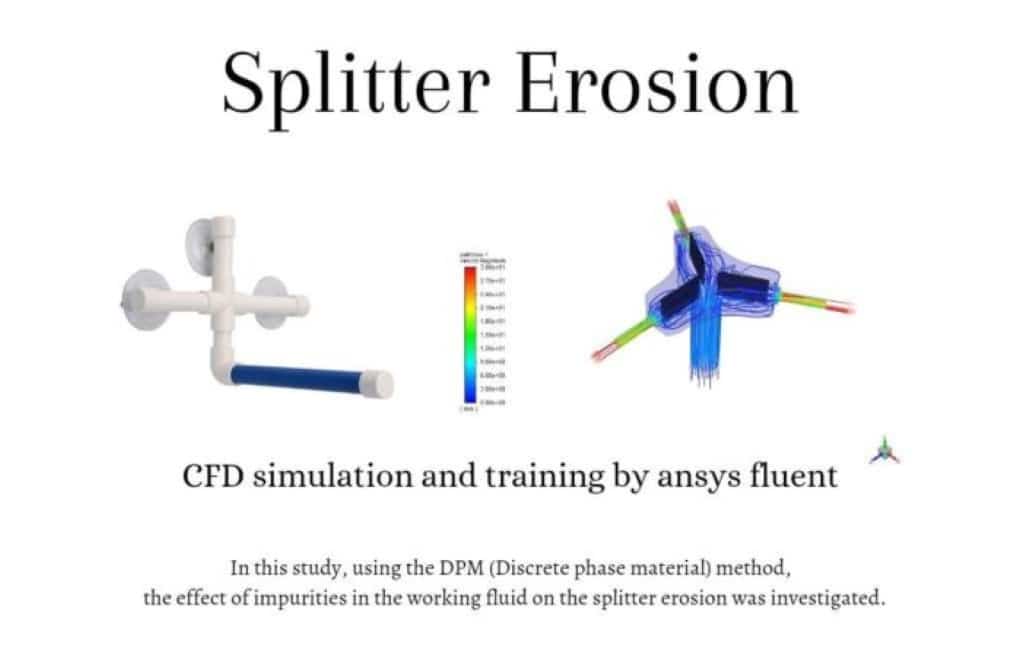
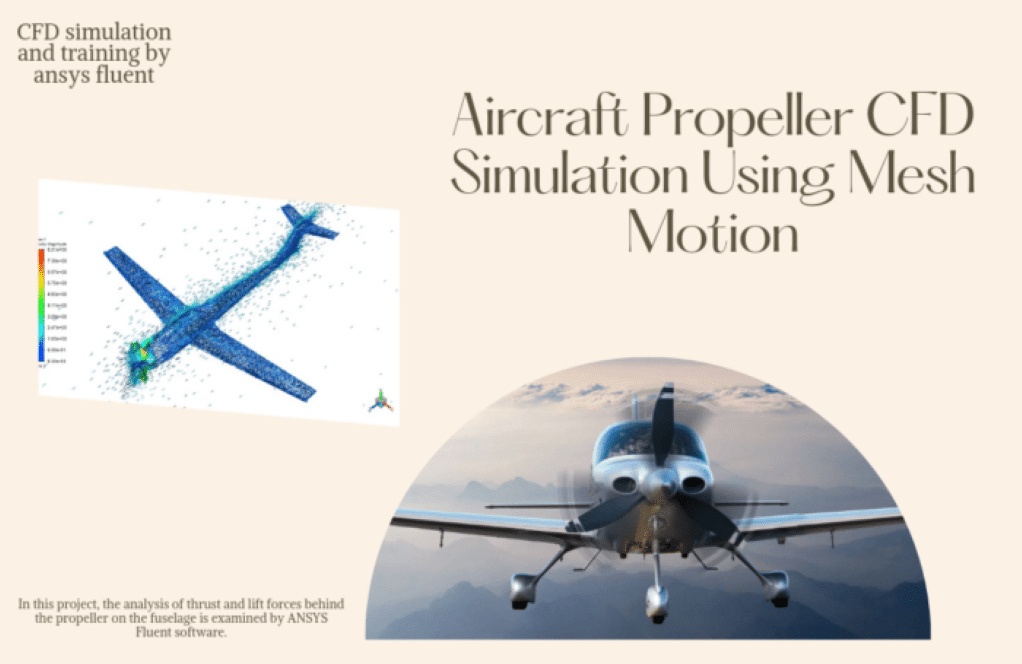
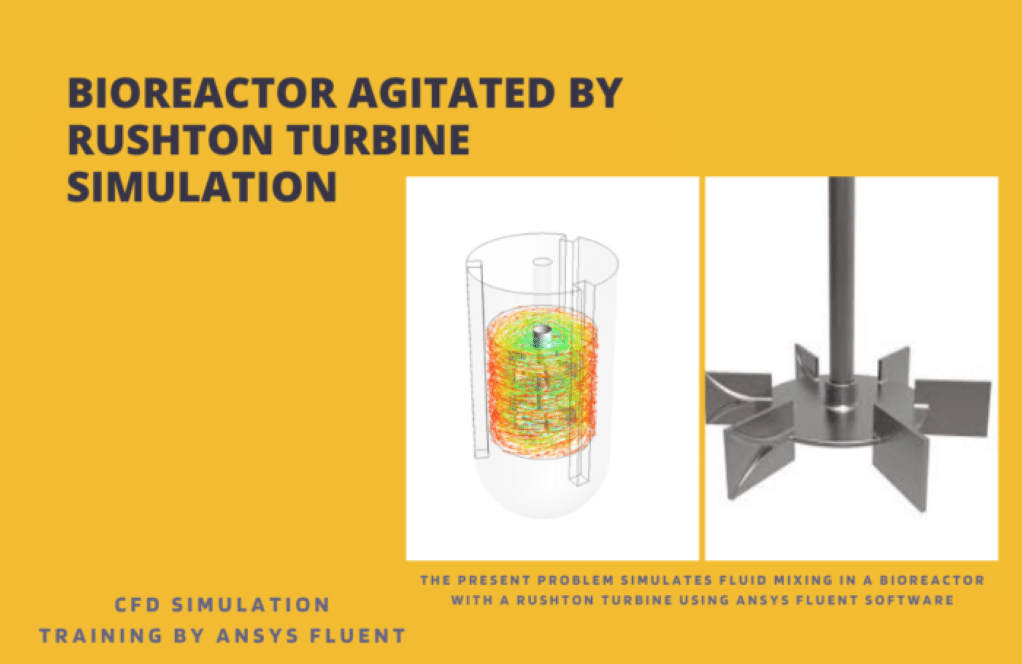
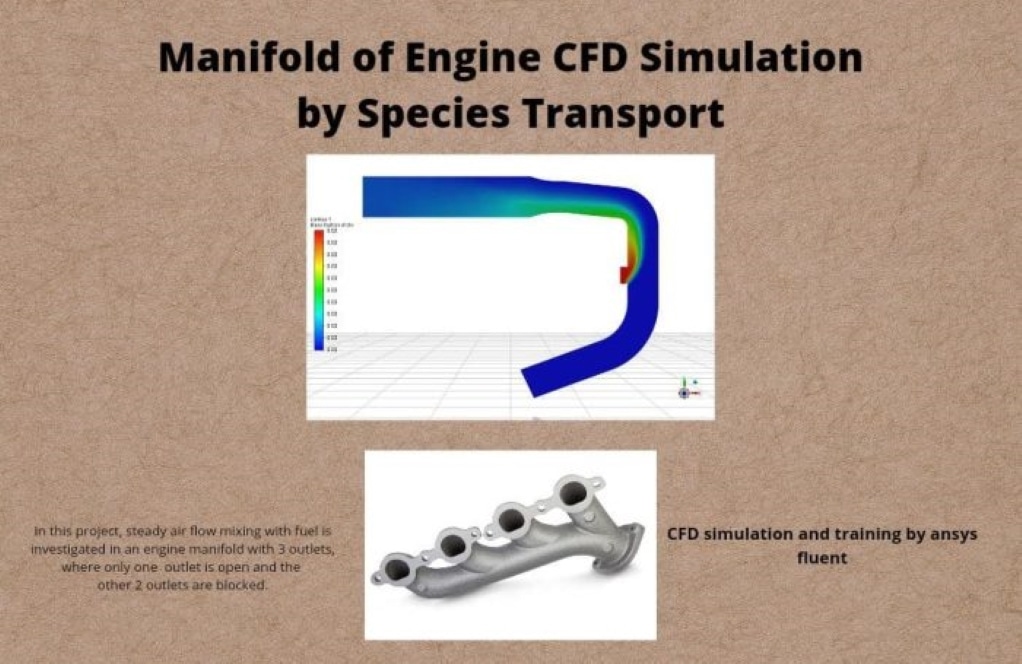
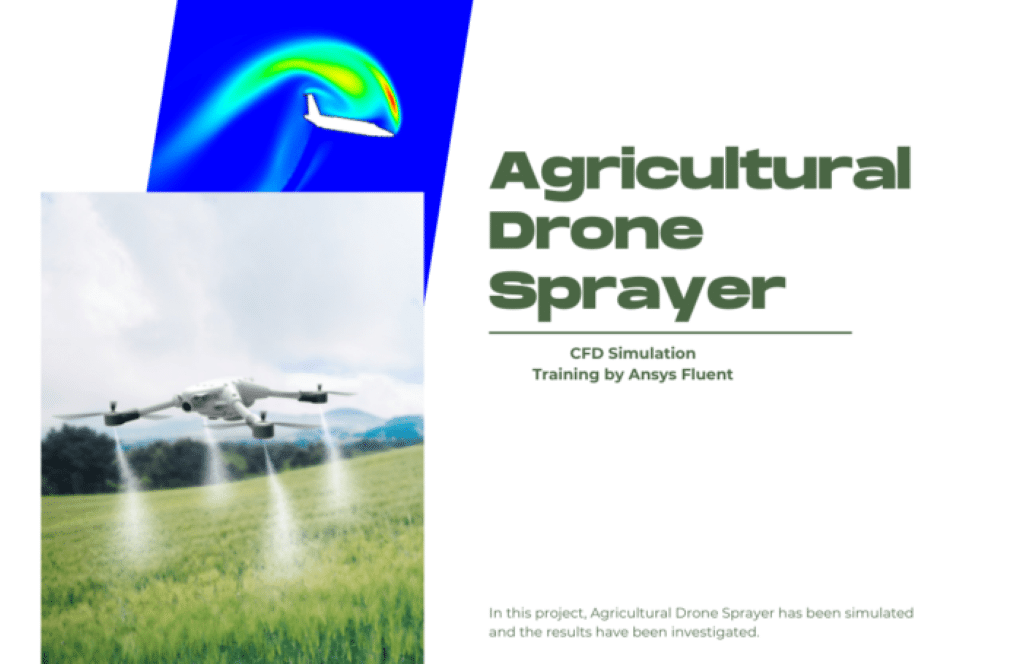
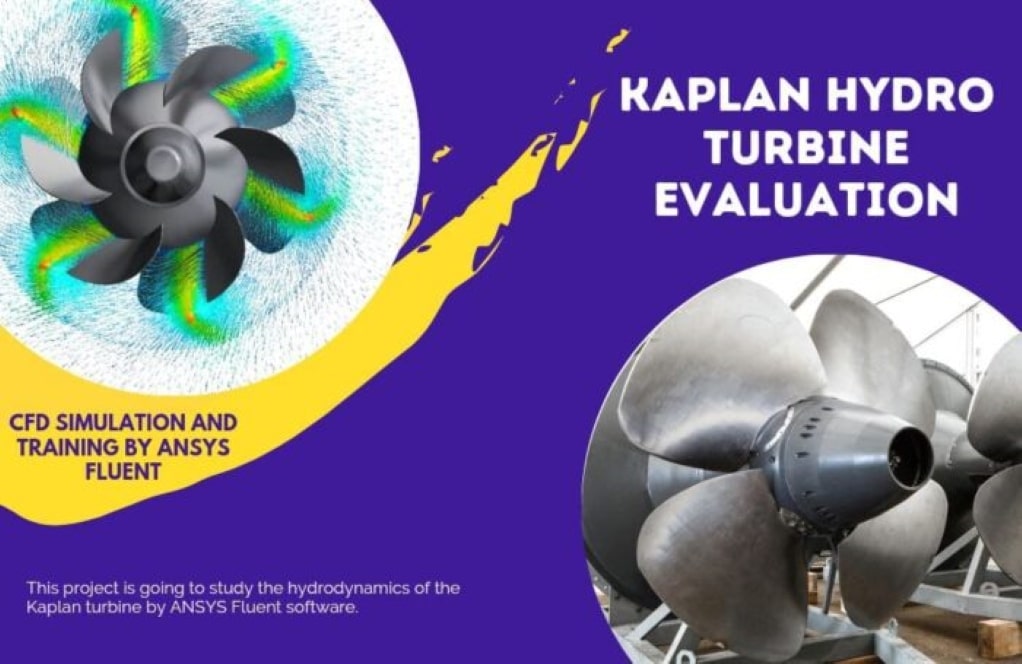
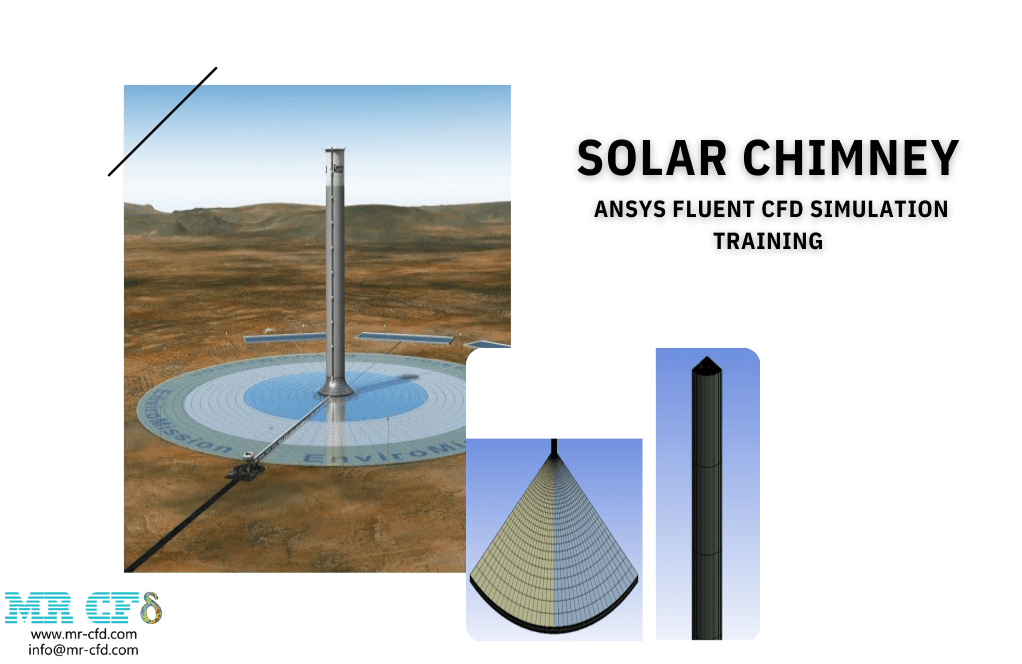
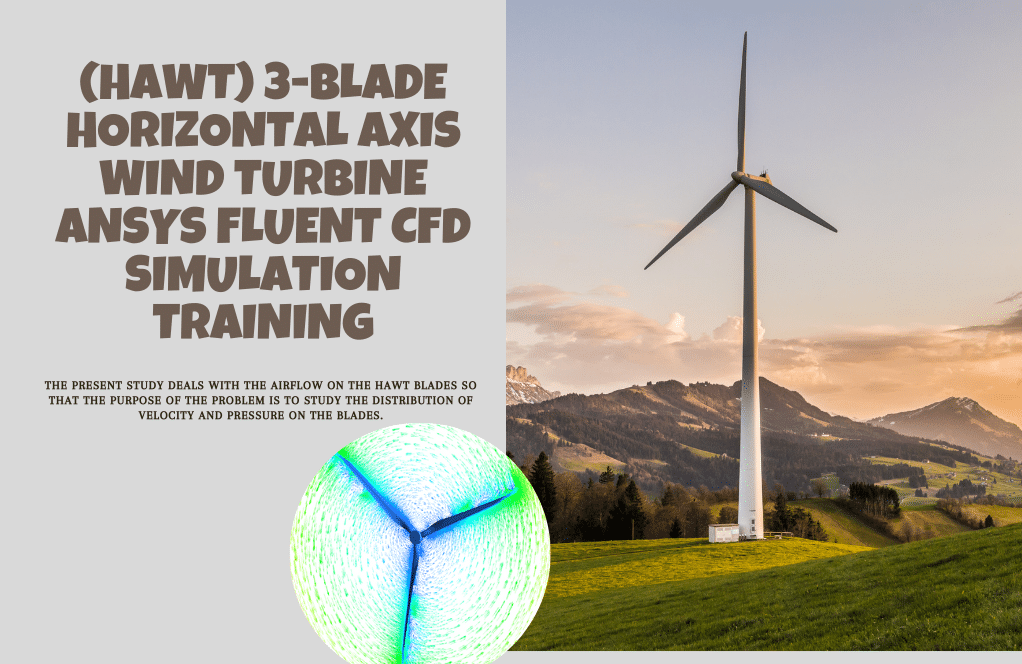
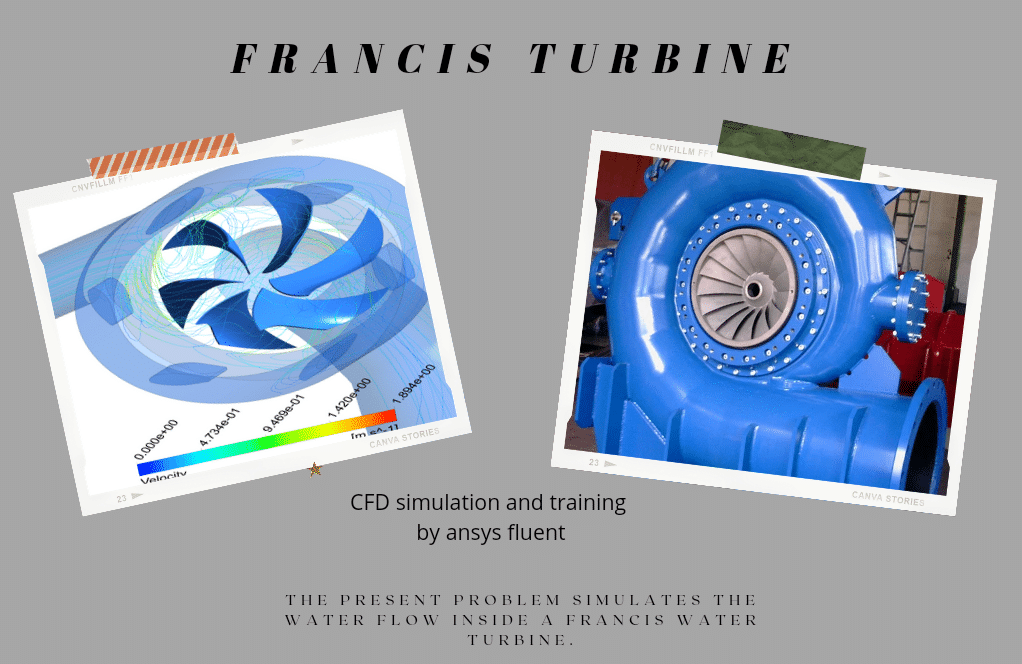
Dr. Kaitlin Zieme II –
I’m currently working on a project that involves heat transfer simulation. Will this training package be useful for me?
MR CFD Support –
Absolutely, this package includes exercises that cover heat transfer simulations. We can also customize these simulations based on your specific needs.
Hillard Watsica –
I noticed that this training package uses the k-epsilon turbulence model. Could you elaborate on the fundamental principles of this model?
MR CFD Support –
The k-epsilon model is a two-equation model that provides a general description of turbulence by two transport equations: the turbulent kinetic energy (k) and its dissipation rate (epsilon). This model is used in our exercises to give you a practical understanding of its application
Name Gulgowski –
I’m new to ANSYS Fluent and I’m trying to understand the fundamentals of the finite volume method. Does this package cover that?
MR CFD Support –
Yes, this package provides a practical understanding of the finite volume method, which is the basis of ANSYS Fluent. We can also customize the exercises based on your specific requirements.
Dr. Lane Bashirian IV –
This Intermediate mechanical engineering package sounds exactly what I need to level up my CFD skills. But before purchasing, I’d like to know more about the level of detail in the training videos. Do they include step-by-step instructions for each exercise, so a user with basic knowledge can follow along without getting lost?
MR CFD Support –
Absolutely, our training videos are created with intermediate users in mind, offering thorough step-by-step instructions for each exercise. They provide detailed guidance through every stage of the simulation process, ensuring users with basic knowledge can understand and follow along effectively. The videos also cover how to interpret the results, affirming users will have the comprehensive know-how to execute their projects with confidence.
Miss Scarlett McGlynn DVM –
I’m interested in multiphase flow simulations. Does this package provide any exercises on this topic?
MR CFD Support –
This package provides exercises that delve into multiphase flow simulations, helping you understand the interactions between different phases. We can adapt these simulations to your particular requirements.
Arielle Bechtelar DVM –
Every aspect of intermediate training was clearly described, and executing the exercises not only bolstered my fundamental knowledge but introduced new, essential techniques pivotal for complex simulations. Truly invaluable for any aspiring mechanical engineer!
MR CFD Support –
We’re thrilled to hear you found the Mechanical Engineering Training Package so advantageous and educational! Your recognition of the value it adds to your professional growth is greatly appreciated. Do reach out if you have any further feedback or need support. Thank you for sharing your positive experience!
Carmine Fadel –
I’m amazed by the variety of mechanical simulations presented in this training package. Each exercise seems to offer practical experience in a different area. Well done!
MR CFD Support –
Thank you for your positive feedback! We are delighted to hear that you appreciate the diversity and practical approach of our Intermediate Mechanical Engineering training package. Our aim is to provide comprehensive and hands-on experiences that truly enrich the learners’ understanding in the field of CFD using ANSYS Fluent. If you have any further comments or require assistance, we are here to help!
Mr. Reece Heidenreich –
Is the multi-phase VOF model available in all the exercises of the Mechanical Engineering Training Package, or only in specific projects?
MR CFD Support –
The multi-phase VOF model is specifically mentioned for use in problem number 1, where the liquid phase is separated from the gas in a horizontal cylindrical separator. It isn’t stated as being used in all exercises, suggesting its application is limited to particular simulations that require tracking and separation of multiple phases within a fluid domain.
Coty Sipes –
Your training package seems comprehensive. Do you cover how to interpret results for each of these exercises for users who may not be familiar with the analysis?
MR CFD Support –
Yes, the Mechanical Engineering Training Package includes extensive resources to assist users with interpreting their results. A comprehensive Training Movie is provided, which guides users through the solution process and includes detailed explanations on how to extract and understand the desired outcomes from each exercise.
Eliane Donnelly –
I purchased the intermediate mechanical engineering package and I must say I’m thoroughly impressed by the depth of information it offers. The quality of the practical exercises and the clarity in presenting complex simulations is exemplary. The training truly bridges the gap between theory and hands-on application. Kudos to MR CFD for putting together such comprehensive training content!
MR CFD Support –
Thank you so much for your kind words! We’re delighted to hear that you are satisfied with our Mechanical Engineering Training Package for intermediates. Understanding how to apply complex simulations practically is crucial, and we’re glad our package helped you in this regard. Your feedback is greatly appreciated, and it motivates us to continue offering high-quality learning materials. If you need further assistance or wish to explore more of our learning resources, feel free to reach out to us anytime!
Dillon Lockman DDS –
I recently completed the second part of the mechanical engineering training package with 10 exercises, specially designed for intermediate ANSYS Fluent users. It covers a remarkable variability of practical problems, from fluid mechanics to motion simulations. The examples are methodically planned and incrementally help in understanding and applying different facets of mechanical simulations using Fluent. The hands-on exercises made the process of learning far more engaging than any traditional approach. This package proves invaluable for solidifying CFD skills with intermediate complexity.
MR CFD Support –
Thank you for your thorough and complimentary review! It’s fantastic to hear that our training package for intermediate ANSYS Fluent users proved to be engaging and valuable in enhancing your CFD skills. We strive to create practical and methodical learning materials that effectively aid in understanding and applying simulation concepts. Your feedback is greatly appreciated, and we hope the knowledge you gained continues to benefit your mechanical engineering endeavors!
Andres Hauck –
I recently went through the ‘Intermediate Mechanical Engineering Training Package, Part 2.’ I found the content relevant and quite enlightening, specifically the multiphase flow simulations which were directly applicable to my current project. The practical demonstrations combined with theoretical explanations helped me get a solid grasp of the complex topics. A well-structured and informative sequence of exercises indeed.
MR CFD Support –
Thank you for your kind words and for sharing your experience with our Intermediate Mechanical Engineering Training Package, Part 2. We’re thrilled to hear that the practical exercises and detailed explanations have been helpful with your projects and have enhanced your understanding of multiphase flow simulations! If there’s anything else we can assist you with in your learning journey, please let us know.
Ms. Amy Trantow –
This training package seems comprehensive, but can you clarify if these exercises come with a step-by-step solution guide or do they only provide the final outcome without the solution process?
MR CFD Support –
The Mechanical Engineering Intermediate Training Package includes a comprehensive Training Movie for each of the 10 exercises, which guides you through the solution process, ensuring you understand how to set up, solve, and extract all the essential results. Geometry & Mesh files are also provided to make the learning experience interactive and thorough.
Walton Hammes MD –
The training package seems to cover a diverse set of exercises that would help in understanding multiple modeling approaches. Could you please elucidate on how the Mesh Motion method is applied within project 8 related to the mechanical propeller?
MR CFD Support –
In project number 8, the Mesh Motion method is applied to model the rotating movement of the propeller. The computational domain containing the propeller blades is set to rotate around the impeller axis to simulate the actual rotational motion encountered in operation. This method ensures that dynamic interactions between the rotating propeller and the air are accurately captured to determine thrust and lift forces.
Prof. Jennie Baumbach –
I found the practical exercises in the intermediate training very thorough. I particularly enjoyed project number 4 on the Kaplan turbine. The explanations were clear and helped deepen my understanding of turbine flow dynamics.
MR CFD Support –
Thank you for your kind words! We’re ecstatic to hear that the Kaplan turbine exercise was informative and enhanced your understanding. If you’re curious about any other simulations or need further clarification, feel free to reach out. We’re here to support your learning journey!
Kaylie Greenfelder –
I absolutely enjoyed the challenging simulation tasks provided in the Mechanical Engineering Training Package Part 2, especially focusing on multiphase flows and rotating machinery. Each exercise pushed my ANSYS Fluent skills further and I appreciate the variety of applications covered. It was a learning-packed experience.
MR CFD Support –
Thank you for your positive feedback! We’re thrilled to hear that our Mechanical Engineering Training Package Part 2 met your expectations and provided you with a valuable experience. It’s fantastic to know that the variety and complexity of the exercises enhanced your ANSYS Fluent capabilities. We aim to deliver quality educational material, and it’s rewarding to see it helps our customers. If you have any further questions or need assistance as you continue exploring mechanical simulations, don’t hesitate to reach out. Happy simulating!
Garnet Metz –
I was impressed with the diverse set of problems that could enhance my practical skills in Mechanical Engineering using ANSYS Fluent. Thanks!
MR CFD Support –
Thank you for your kind review! We’re thrilled to hear that our Mechanical Engineering Training Package for intermediate users provided you with valuable experience across a range of problems. If you have any further questions or need support as you work through the exercises, don’t hesitate to reach out to us.
Corbin Jaskolski I –
This training package seems extremely comprehensive. Do we need any prior knowledge of multiphase flow modeling before starting with these exercises, or is the included material sufficient for those new to the topic?
MR CFD Support –
The material in this training package is tailored for intermediate users, which suggests that some prior knowledge or experience with multiphase flow modeling is helpful. However, the package includes a comprehensive training movie and detailed instructions for each exercise, which should make it possible for users familiar with ANSYS Fluent to successfully complete the exercises even if they are not experts in multiphase flow.
Elna Waters –
I successfully completed exercise 7 on fluid mixing in a bioreactor using the provided training materials. The steps were clear and the simulation results matched closely with the expected outcome. It really deepened my understanding of how stirrers impact the mixing process inside bioreactors.
MR CFD Support –
Thank you for your positive review! We are thrilled to hear that our training materials helped enhance your understanding of fluid dynamics in bioreactors. We strive to provide clear and detailed instructions so users like yourself can achieve accurate simulation results with confidence. Your success is our accomplishment!
Jaren Abshire –
The Mechanical Engineering Training Package for INTERMEDIATE users Part 2 seems like a great progression from the basics. The variety of exercises covering different systems and multiphase flows looks outstanding!
MR CFD Support –
Thank you for the kind words and taking the time to review our Mechanical Engineering Training Package for Intermediate Users Part 2. We’re glad to hear you find the variety and complexity of the exercises to be up to your expectations. If you have any more feedback or need further assistance, feel free to reach out!
Elliot Swift –
The training package seems thorough. Could the provided exercises in this package be a foundational tool for someone aiming to focus on a niche like automotive aerodynamics in CFD, or would additional specialized resources be necessary?
MR CFD Support –
While this package is designed for Intermediate users and includes a range of exercises related to mechanical engineering simulations, it should offer a strong foundation in understanding fluid dynamics and CFD processes that are applicable across various industries. However, for a niche like automotive aerodynamics, additional specialized resources or training exercises specific to automotive applications and more complex aerodynamic phenomena could be necessary to gain in-depth expertise.
Jeramie Jacobs –
This package seems very comprehensive. Do any of these exercises cover thermal analysis of mechanical parts?
MR CFD Support –
No, the exercises in this package focus on fluid dynamics and mechanical devices simulations using ANSYS Fluent, covering a variety of topics such as flow separation, phase collision, robotic movements in water, turbine hydrodynamics, and mixing processes. Thermal analysis is not specifically mentioned as a part of this intermediate training package.